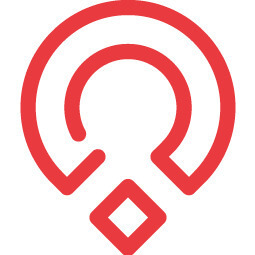With the influx of new talent waning and talent gaps appearing more in recent years than in the past, most companies will tell you that they consider succession planning very important. Unfortunately, many companies haven’t quite figured out how to optimize succession planning – most are ahead of the ball if they even have an org chart listing all of their employees and showing where they fit into the grand scheme.
Our 2025 Preferred HR Software Partners

BambooHR Software
By BambooHRCompany Name
BambooHR
Suitable Company Sizes
Small, Medium
Support Available
Android, IOS, Web Browser, Windows

Zoho Recruit
By Zoho RecruitCompany Name
Zoho Recruit
Suitable Company Sizes
Small, Medium
Support Available
Android, IOS, Web Browser
What Is Succession Planning?
Succession planning is a strategy in which companies plan for passing on positions of leadership within the company. This involves identifying employees who are interested in rising through the ranks of the company and who have the ability to do so. Succession planning also involves providing training so that those earmarked for promotion will have the skills and knowledge they’ll need when the time comes to move up the ladder.
It’s important to have a plan in place for when employees leave the company for other opportunities. Succession planning helps ensure a smooth transition because you have employees who are ready to move into new roles as they open up. Succession planning also involves preserving the knowledge that current employees have so it’s not lost when someone moves on.
How to Prepare a Succession Planning Strategy
The first step is to be aware of all positions that may potentially need to be filled. For low-level positions, this is a part of your hiring strategy. However, higher-level positions need to be considered as well. Just because someone is in a position of leadership in your company doesn’t mean that they won’t move on to another opportunity. This possibility exists at all levels, all the way up to the CEO.
Your succession planning strategy will take into account all possible positions and what skills and knowledge are needed in order to prepare someone to take on that role.
Create an Organizational Chart
Creating an org chart and succession plan can be a useful part of an effective hiring strategy. A succession plan can help to expose talent gaps that may not have been obvious. After drafting a succession plan, a hiring team will have a better idea of exactly what positions and departments require staffing.
Identify Gaps in Skills and Knowledge
It’s important to identify where there are skill and knowledge gaps in your organization. If the employees at one level are missing knowledge they would need to move up to the next, training will need to address that gap. In preparing your succession plan, it’s important to identify these gaps in order to plan training for your staff.
Transfer Specialized Knowledge
While a good amount of knowledge is gained from training, employees gain further knowledge through experience. This is the most difficult type of knowledge to replace if a valued employee leaves. Creating a plan for knowledge transfer can help retain this experience and specialized knowledge and make it available to other employees.
Important Steps in Succession Planning
No matter the size of the business or the positions that may need to be filled, it’s important to follow the right steps in creating a succession planning strategy. Recruit the right people for each position at the hiring stage and you’ll have the right people in place to move up the company ladder later on. You’ll also need to ensure that everyone is trained fully, not just in what they’ll need to know for their current jobs. Anyone who is interested in promoting and who has the potential to do so will need training for future roles as well.
Recruit the Right People
The first step in succession planning is to ensure that you have the right talent from the beginning. Hiring the right people initially will ensure that you have the right people going forward as well. When creating your hiring strategy, keep in mind that the candidates you hire will need to be considered for promotions as well.
Training
Training is essential for any employee to properly do their job. Even if the position they’re hired for requires prior knowledge, there’s still training needed for company-specific details and expectations. But training in succession planning goes beyond that. It’s important to plan training for employees’ careers, not just their current jobs. By investing more in training employees in the skills they’ll need to rise within the company, you’ll not only guarantee that they’ll be prepared for promotions but that they’ll want to stay with your company to see that happen.
Benefits of Using ATS Software in Succession Planning
One of the issues that many companies have with succession planning is a problem of perspective. While succession planning is a task often assigned to HR and managed through an HRIS, it may be better managed by the talent acquisition team through an applicant tracking system (ATS) software. Since the talent acquisition team is directly affected by talent gaps and position vacancies, they have more at stake in succession planning. An ATS has many features that can each be useful as a succession planning tool.
Creating Development Opportunities at All Levels
While ATS software is typically thought of for use in external hiring, using the software for internal development and internal promotion opportunities can help to better fill talent gaps at higher levels. Allowing employees to train at their own pace, set goals, and align themselves with position requirements can improve engagement and staffing while saving managers and HR professionals time. In this way, your ATS can function as succession planning software.
Establishing Candidate Goals and Fit
Succession planning is most efficient when begun right at the beginning of a new employee’s career, or even before that person is established as an employee. By using the ATS, or succession plan software, to note candidate goals and where they may fit into a succession plan, hiring needs can be better met both currently and in the future.
Visibility in Succession Planning
Allowing employees to view succession plans and provide input can be remarkably engaging and can assist with succession plan optimization. Linking the succession plan to be accessed through existing HR software using employee portals, while also making it accessible through ATS software, can make it easier to manage the succession plan from many angles.
Allowing employees to see their place in the succession plan can inspire employees to work towards their next promotion – or it can cue employees into needed conversations if they feel that the succession plan doesn’t fit with their own goals and preferences.
Exposing Ineffective Employees
While it’s nice to think that all employees have a place in the succession plan and will be working hard towards being promoted to the next open position, this is unfortunately not the case. Some employees will choose to stay in their position and will shy away from doing the necessary work to promote.
Using ATS software for succession planning can help to expose ineffective or stagnant employees. This may reveal coaching opportunities, or may even alert management to a need for termination in some cases.
Using ATS software for succession planning can help to improve staffing and talent acquisition at different levels and throughout many departments. By allowing talent acquisition professionals to take the lead on succession planning, overall recruitment and staffing may be improved. If your company is in need of an ATS to manage succession planning, We can help you find the software that will best suit your needs. Visit our software match page today to get started.












